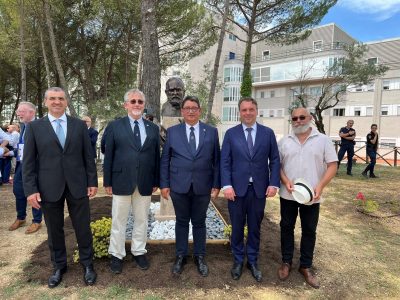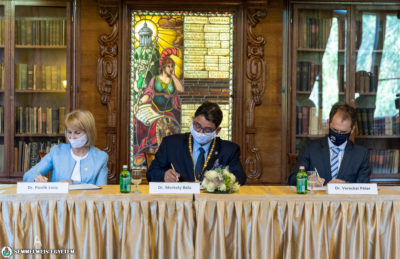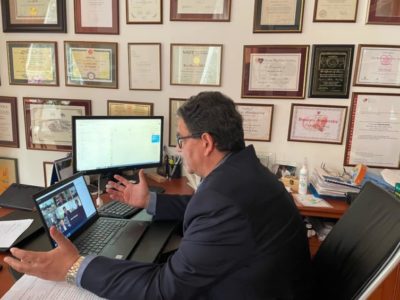NATO soldiers are set to receive training in essential medical procedures during armed conflict and disaster situations at the University’s medical simulation laboratory as part of an agreement signed between the University and the NATO Centre of Excellence for Military Medicine (MILMED COE) on September 8. Semmelweis University is the first non-military health institution to have concluded an agreement with NATO.
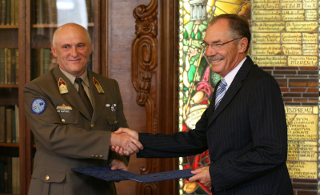
For the Budapest-based MILMED COE, the development of simulation training is a key issue in the years ahead. They searched all across Europe for the right organisation to work together with; the fact that the choice ultimately fell on Semmelweis University is an acknowledgement of the professional work that takes place here, Col. Dr. István Kopcsó, director of MILMED COE related at the signing ceremony.
Rector Tivadar Tulassay spoke about how, with the signing of the cooperation agreement, organisations working in seemingly distant areas are now able to draw closer to each other. At the same time, both the health care services provided in the military and the acquisition and maintenance of the medical skills needed in warfare and disaster situations can be simulated, just like civil patient care can.
Beyond medical simulation training programmes, the cooperation’s aims include the organisation of joint conferences and joint applications for European Union grants.
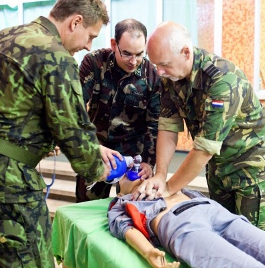
Simulation training has been in place at Semmelweis University since 1995. The simulation laboratory, which is equipped with modern information and communication technology (ICT), allows real-life medical cases to be effectively simulated, teaching students the optimal response to each of these scenarios.
The University’s simulation centre is set to undergo an expansion in the near future. Unrelated to the current agreement, Semmelweis University has recently won a HUF 330 million (approx. EUR 1.169 million) grant to develop the Semmelweis Skill Centrum within the framework of the New Széchenyi Plan and with the support of the European Union. Here, students will be able to perform numerous interventions, ranging from phonendoscopic examinations, catherising and peripheral venipuncture to resuscitation on the laboratory’s skills development devices and phantoms. What is more, students can practice quick decision-making in life-threatening situations using the lifelike Hi-Fi mannequins.
Rector Tivadar Tulassay stated that the goal is for the practical skills of Semmelweis University graduates to be at an even higher level than they currently are.
Pálma Dobozi
Translated by Gina Gönczi
